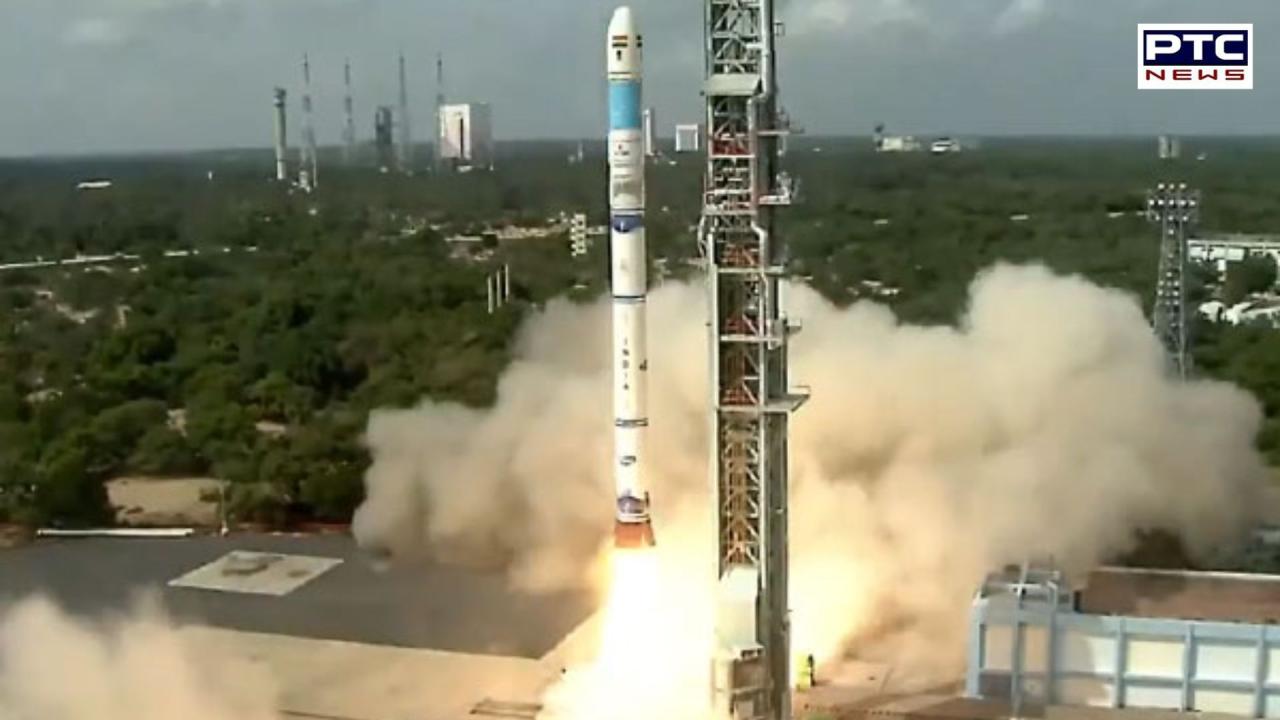

ISRO's SSLV-D3 launches: India's compact rocket aims to capture global satellite market
PTC News Desk: The Earth Observation Satellite (EOS-08) was successfully launched by the Indian Space Research Organization (Isro) on Friday from the Satish Dhawan Space Centre in Sriharikota, India, using the Small Satellite Launch Vehicle (SSLV-D3).
With this flight, the development phase of SSLV is completed, opening the door for more operational missions by NewSpace India Limited (NSIL) and the Indian industry. The one-day delay in the SSLV-D3 mission, which was originally slated for August 15, represents a major advancement in Isro's attempts to offer inexpensive space access.
ISRO launches Earth Observation Satellite-8 from Sriharikota
Read @ANI Story | https://t.co/zYE4ImBEFT#ISRO #Earthobservationsatellite pic.twitter.com/fIOEu2yqXB — ANI Digital (@ani_digital) August 16, 2024
The launch window opened at 09:17 IST, and the EOS-08 satellite and the SR-0 DEMOSAT were successfully launched into a 475 km circular orbit about 17 minutes after liftoff.
The purpose of the Earth observation satellite EOS-08, which weighs about 175.5 kg, is to showcase innovative technologies and payload equipment that work with microsatellite buses.
It is equipped with three innovative payloads, including the SiC UV Dosimeter, the Global Navigation Satellite System-Reflectometry payload (GNSS-R), and the Electro Optical Infrared Payload (EOIR), all of which are built on Isro's Microsat/IMS-1 bus.
#WATCH | ISRO successfully launched the third and final developmental flight of SSLV-D3/EOS-08 mission, from the Satish Dhawan Space Centre in Sriharikota, Andhra Pradesh.
ISRO chief S Somanath says, "...The third developmental flight of SSLV - SSLV-D3/EOS-08 has been… pic.twitter.com/nnt8ZldIIp — ANI (@ANI) August 16, 2024
The EOIR payload can operate efficiently day or night because it can take pictures in the Mid-Wave and Long-Wave infrared bands. We can't see Mid-Wave Infrared (MWIR) or Long-Wave Infrared (LWIR) light with our eyes, but they can still be felt as heat. These kinds of light are used by satellites to examine and investigate Earth.
The SiC UV Dosimeter monitors UV irradiance and functions as a high-dose alert sensor for gamma radiation, while the GNSS-R payload displays remote sensing capabilities for soil moisture evaluation and ocean surface wind measurement.
The amount of ultraviolet (UV) light that the sun is able to reach a specific location can be measured using UV irradiance. UV radiation is a form of solar energy that is not visible to humans, yet it can still cause sunburn and other skin-related problems.
The SSLV-D3 mission showcases important developments in satellite mainframe systems, such as an integrated avionics system that can accommodate up to 400 GB of data storage and merges many tasks into a single unit.
Isro's dedication to innovation and capacity to adjust to the increasing need for smaller satellite launches are demonstrated by this mission.

After the SSLV development project was completed successfully, Isro is now well-positioned to grow its space industry business by providing adaptable and effective mini, micro, and nanosatellite launch options. India's space capabilities are improved by the EOS-08 mission, which also solidifies India's standing in the global space community.
Also Read: Preventive tips to minimise risk of monsoon infections
- With inputs from agencies
